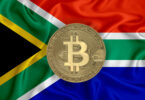Last April a draft Russian law surfaced to legalize the use of digital assets, specifically tokenized assets, for cross border payments. Now a State Duma Committee has approved a draft law. The entire State Duma, the lower legislative house, will consider the Bill tomorrow, February 27.
Russia has a legal framework for tokenized financial assets, which it refers to as digital financial assets (DFA). These regulated assets include tokenized commodities, trade finance and other structured products.
Legislation for DFAs was introduced before the Ukrainian War. Hence, at the time, DFAs were explicitly not allowed to be used for payments. This prevented people from using assets such as tokenized gold for settlement.
However, times have changed and with sanctions continuing to bite, Russia is looking for alternative ways to settle cross border transactions. Apart from DFAs, other avenues are central bank digital currency (CBDC) and even cryptocurrency.
“Digital financial assets can be used as counter representation under foreign trade agreements (contracts) concluded between residents and non-residents,” the legislation reads, according to Interfax. Anti money laundering procedures are still applicable.
“The use of digital assets to service foreign trade operations will help Russian importers and exporters work more actively with friendly countries,” said Anatoly Aksakov, head of the Duma Financial Committee., according to Interface. “To a certain extent, we will be able to solve the problem of sanctions pressure on our country.”
Digital assets v Chinese renminbi
Quite a bit of Russia’s cross border activity has switched from dollars to China’s renminbi. Foreign exchange transactions with the renminbi surpassed 50% for the first time in January this year. Additionally, at the end of last year, renminbi accounts held at Russian banks by individuals and corporations had an equivalent balance of $68.7 billion, compared to U.S. dollar balances of $64.7 billion. Lending has also switched from the dollar to the renminbi, with loans reaching the equivalent of $46.1 billion.
Meanwhile, the BRICS group of countries, which has expanded to ten, continues to tout local currencies for trade rather than the dollar.






